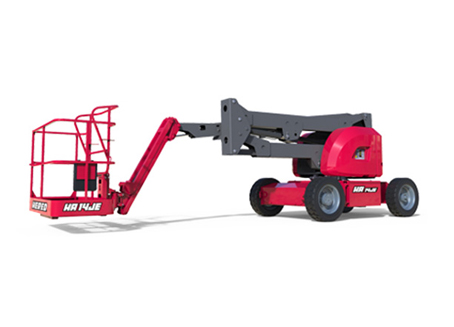Operational, Moving, and Loading Safety Tips to Help Your Workers Avoid a Boom Lift Tip-Over
Unsafe work practices are can cause a boom lift-tip over, so workers should not:
√ Carry objects that are larger than the lift platform.
√ Drive with the lift raised (unless the lift is designed for this purpose).
√ Exceed the lift’s horizontal or vertical reach limits.
√ Override safety devices.
√ Operate the lift in poor weather.
√ Exceed the lift’s speed limits.
√ Operate the lift near debris, potholes, overhead wires, and cables.
√ Avoid horizontal work tasks that put too much strain on the lift.
Workplace safety should be evaluated regularly, and an employer should update its work practices as needed. This helps ensure that workers are consistently protected against boom lift tip-overs and other worksite dangers.
Employers should also note that despite their best efforts, a boom lift tip-over can happen without notice. This is why boom lift workers should always wear fall protection gear.

OSHA requires aerial lift workers and MEWP operators to wear full-body harnesses attached to lanyards. Connect the lanyards to the boom or basket. This helps prevent workers from being ejected from the bucket during an aerial lift tip-over. Fall arrest gear helps minimize injuries by stopping a fall before workers hit the ground.
Every Jobsite should also have written rules for when and how to use fall protection gear. Employee safety gear should be examined before every job; if the gear is damaged, it must be replaced.
Finally, once in the air, workers should never sit, stand, or climb on the guardrails. Workers should pay close attention to the task at hand and watch for potential dangers. In the event that a fall occurs, workers should seek help right away.
Here are best practices to help boom lift operators prevent tip-overs:
• Keep the Work Area Clear: Ensure there is sufficient space between the area where a boom lift is used and all other equipment. Only authorized personnel should enter the work area.
• Require Operators to Wear a Harness: Provide harnesses that must be worn any time a boom lift is being used. Teach operators how to securely fasten a lanyard to the lift’s bucket.
• Operate a Boom Lift on Level Ground: Verify boom lifts are only used on stable ground. Also, set the boom lift brakes for additional stability.
A boom lift tip-over is a serious problem and must be treated accordingly. Teaching workers best practices to avoid boom lift tip-overs and other forklift safety dangers can help you avoid workplace accidents, injuries, and fatalities.
Enroll in Workplace Safety Training to Reduce the Risk of Aerial Lift Tip-Overs
Workplace safety training plays a vital role in aerial lift tip-over prevention. By offering safety training, you can help your workers avoid aerial lift tip-overs and other on-the-job dangers now and in the future.